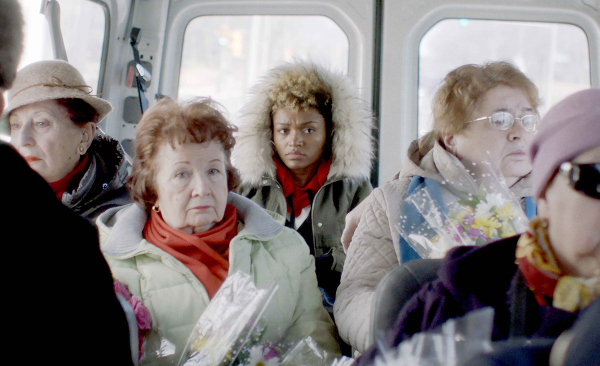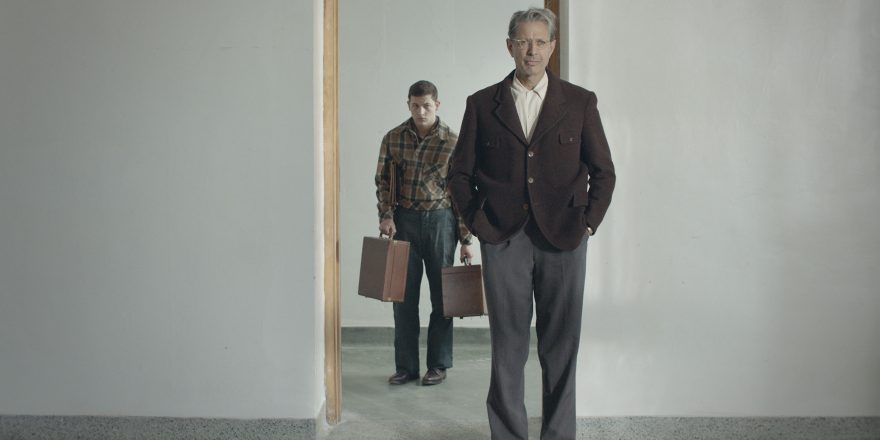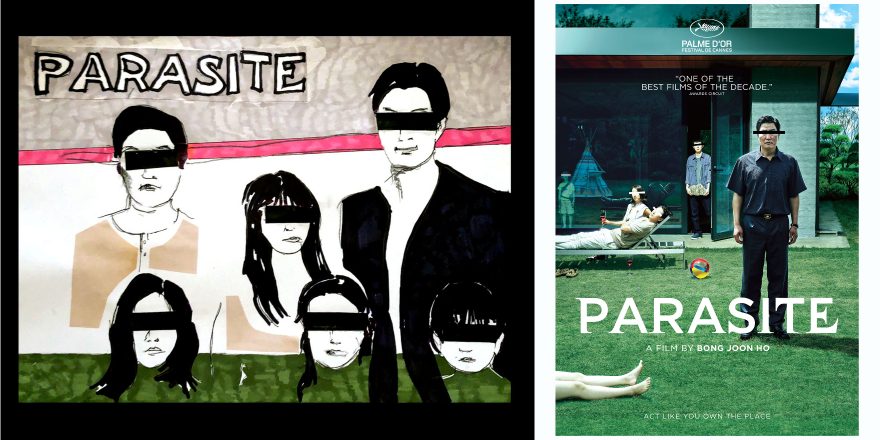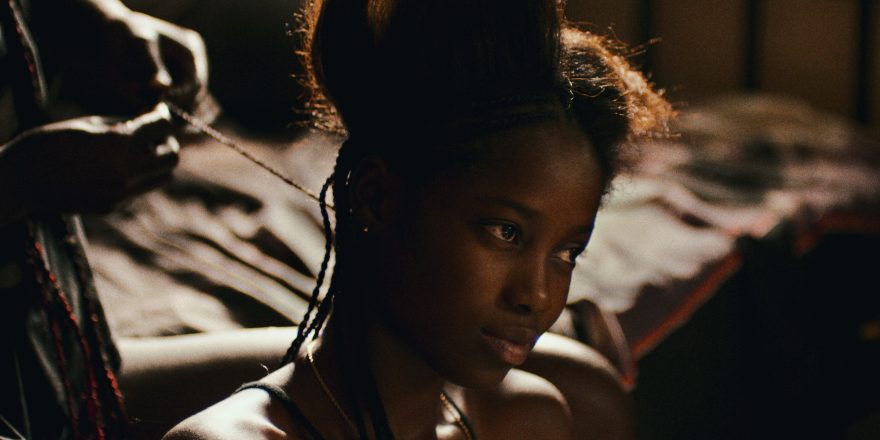There’s a hard cut about 20 minutes from the end of Give Me Liberty that so stunned me, I silently mouthed “wow.” Preceding it, Vic and Tracy, the duo whose slow-building connection grounds this cacophonous collage of a movie, are in Vic’s van as he drives nocturnal Milwaukee streets. This is followed by a scene in which Vic’s (white) immigrant grandfather babbles in Russian while Tracy’s (black) grandmother helps him cook a chicken, something he has been trying to do with zero success and often calamitous results for much of the film. They don’t really understand each other, but they also totally understand each other – same as Vic and Tracy, who at least technically speak the same language.
Occasionally the elderly duo hug, allies in controlled mayhem. The final shot is of the raw bird, sizzling in a cast iron skillet, another cast iron skillet and a red pot stacked on top to hold it flat. We hang on the chicken for a beat, a small-scale success in a makeshift, often challenging world.
Then BOOM. An electric shock of an edit. Strobes and shadows and pounding synths. Suddenly we are in Milwaukee’s Eisenhower Training and Work Center for People with Disabilities. A party is in full swing, and people with a range of developmental issues are letting it rip – bobbing, swinging, pogo-ing, doing a split for the camera, spinning a wheelchair decorated in bright colored lights in dizzying circles (which cannily segue to the flashing lights on a speeding police van). The music pulses. The rhythms escalate. Bliss is found; it’s here.
Give Me Liberty is utterly unlike any other film I saw this year, or in fact any year, but somehow that mattered way more this year. It is radically inventive, often extremely funny, and by turns despairing and exhilarating, a tonal see-saw. It foregrounds faces and ways of being that are rarely if ever shown or seen on a screen outside of documentaries (Frederick Wiseman comes to mind). It deftly teases images, ideas and sounds and braids them into an affecting mosaic. The cutting throughout is killer – not for nothing has this film been nominated for an Independent Spirit Award for editing, as well as the John Cassavetes honor for best feature made for less than $500,000. Indeed, this urgent slice of tumultuous life, which flew way under the cinematic radar in 2019, is an optimal expression of his legacy.

Our guide on a long day’s journey into night is Vic (Chris Galust), the driver of a medical van, who peels a wheel around a town where the sky always seems to be thuddingly grey. Hectored by his wards and their cascading demands, the implacable set of his face seems like a mask he maintains simply to get through it all. This particular day is complicated by protests over a police shooting; a raucous group of elderly Russians headed to a funeral; and the cut-the-shit imperatives of wheelchair-bound Tracy (Lauren “Lolo” Spencer), late to her job at the Eisenhower Center, carrying a gigantic sword to give to a feckless boyfriend, with zero patience for Vic’s diversions. Also in the mix is a bearish hustler named Dima (Maxim Stoyanov, one of the few professional actors in the cast), the kind of guy who surreptitiously devours an Almond Joy when it falls out of a diabetic’s purse as the van lurches around the block, a minor transgression that causes yet another major meltdown.
The van is the epicenter of Give Me Liberty, its strict confinement, erratic swerving and constant detours an apt metaphor for the lives of its riders, and for the movie as a whole. Nearly every scene on the van is quick-cut and antic, all things in perpetual motion, including the plastic milk crate of Vic’s beloved vinyls, which keeps sliding across the floor, the top of Dylan’s head from the cover of Greatest Hits slapping back and forth. The van is noisy, frenetic. An accordion plays. Songs are lustily sung. People are constantly shouting, their bodies listing with every turn.
This amped-up energy carries into the scenes at the Eisenhower Center, not just at the nighttime party, but also at a talent show earlier in the day, during which the camera roams the space, hesitating only to register the specific movements or actions of the people who inhabit it. There’s the guy who draws dense Magic Marker forests, used as recurrent imagery throughout the film. Another spells out words with a pointer on his head. A blind man methodically wraps small clusters of white twine. (The shooting, part on film, part digital, is by Wyatt Garfield, also a master of empathetic humanism as the D.P. on Kent Jones’s Diane.)
Then there are moments of great patience and calm – the soft, sweet scenes in which Vic shows Tracy how to make a record “play” using a paper cone and an improvised needle, or the framing dialogues between Vic and a one-man Greek chorus named James, a paraplegic lying in bed and talking above the beauties of life and love while Vic wordlessly ashes his cigarette. No judgments. Give Me Liberty is about accepting and in fact celebrating others for precisely who they are, regardless of race, religion, nationality, gender, age, surface “wellness” or overall disposition (those needing the most help are often the biggest, unabashed pains in the ass), while simultaneously exposing the exercises of power that threaten all tenuous lives.

Above all, Give Me Liberty is about the relinquishing of ego. I haven’t mentioned the director’s name yet, because he makes it clear he feels his name isn’t all that important. The traditional “above the line” credits come dead last in this film, the official titles in lower case, unfurling while Bon Iver’s “Holocene” plays, and, if you’re like me, tears are being wiped away from your eyes. They are as follows: “script: Austen & Mikhanovsky, produced by Austen, direction + montage Mikhanovsky.” This is a team effort between a woman and a man, (Alice) Austen and (Kirill) Mikhanovsky, but even more so, it is a collective offering from the creators and a cast that is nearly all “introducing” because it’s so rife with non-actors. It is a collaboration taking place in real locations, within actual communities, in this case the Russian and differently-abled populations of a post-industrial American city that has escaped widespread gentrification, meaning a city where these characters would be the first to be shoved aside and discarded if their property had any perceived worth by those possessing a different scale of value.
Give Me Liberty insists on the absence of greed, multiplicity of perspective, and the twin necessities of generosity and love. It peels back the tough skin required to get through our present moment and its myriad violations of basic humanity, exposing a tenderly beating heart. It says caring, and not the lip service kind, is ultimately all we’ve got. The only other narrative film this past year that remotely approached its level of scrupulous attentiveness to life on the margins, formal playfulness, and overall poetic grace was Joe Talbot’s Last Black Man in San Francisco, with which it would make an excellent double-feature.
Mikhanovksy and Austen deliver us this gift while we still have a president in office who overtly mocked a disabled individual and got away with it, and also at a time when it is more clear than ever that brand-name male auteurs and what they choose to dramatize will ceaselessly be validated at the expense of the creative offerings of women and people of color. Give Me Liberty implicitly exposes cruelty and hubris without ever making a show of its compassion. It galvanized me and left me shaken, in a good way. When Bon Iver sings, “I could see for miles, miles, miles,” it’s like a hand outstretched to those looking for a different sort of horizon in the current cinematic landscape, one not dominated by white dudes hellbent on promoting their legacies and what is all too often an insular, self-congratulatory vantage point. Boarding the van in Give Me Liberty will expand your worldview that far, if not further.







